§ I don’t often run Kickstarter checks, but I see Mike Dawson’s Rules for Dating my Daughter kickstarter is nearly fully funded after only a few days! Granted it was a pretty modest goal, but I’m glad to see a book of indie non fiction comics get this much support. Also, Mike, I told ya: […]
Viewing: Blog Posts Tagged with: Mike Dawson, Most Recent at Top [Help]
Results 1 - 7 of 7
Blog: PW -The Beat (Login to Add to MyJacketFlap)
JacketFlap tags: comics magazine, gary lieb, jon b cooke, Grant Morrison, Kibbles 'n' Bits, Mike Dawson, charles addams, Top News, free comics, the iron giant, Add a tag
Blog: PW -The Beat (Login to Add to MyJacketFlap)
JacketFlap tags: Mike Dawson, Kickstarter, Top News, crowd watch, Add a tag
A new day a new Kickstarter but this one is notable: a collection of comics essays by Mike Dawson called Rules For Dating My Daughter. Although the book will contain new material, som of it originally ran on The Comics Journal, Slate Magazine, and The Nib. Here's one from The Nib which we admired before, "Longstreet Farm." Dawson's take on things is very funny but he spend a lot of time asking a lot of questions:
Blog: PW -The Beat (Login to Add to MyJacketFlap)
JacketFlap tags: Webcomics, Mike Dawson, Top News, Add a tag

Blog: PW -The Beat (Login to Add to MyJacketFlap)
JacketFlap tags: Interview, podcast, Interviews, Comics, Cartoonists, Blogosphere, Controversy, Mike Dawson, Indie Comics, Top News, Tumbling Tumblr Blogs, more to come podcast, Add a tag
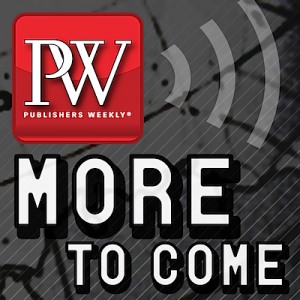 Recorded at Publishers Weekly, it’s More To Come, the weekly podcast of comics news, interviews and discussion with Calvin Reid, Kate Fitzsimons and The Beat’s own Heidi MacDonald.
Recorded at Publishers Weekly, it’s More To Come, the weekly podcast of comics news, interviews and discussion with Calvin Reid, Kate Fitzsimons and The Beat’s own Heidi MacDonald.
In this week’s podcast Heidi interviews comics creator, Tumblr personality and podcaster Mike Dawson, creator of Freddie & Me and Troop 142 about his trials as a mid-career creator, his recent Tumblr musings on the subject and the unexpected comics blogosphere notoriety that followed.
Download this episode direct here, listen to it in streaming here and catch up with our previous podcasts on the Publishers Weekly website, or subscribe to More To Come on iTunes
Blog: PW -The Beat (Login to Add to MyJacketFlap)
JacketFlap tags: Cartoonists, Mike Dawson, Top News, Add a tag

There’s been a lot o’ talk this week about Mike Dawson’s essay on his perceived failure to find an audience. Dawson followed up on it with more thoughts.
The main point of this essay was to discuss my own shortcomings as person unable to build “an audience” for his work. I didn’t even bring up in the original post that I co-hosted a well-known comics-podcast every week for five years, as well as another show on and off over at The Comics Journal. The thing I’m failing at, is taking the dim name-recognition and modest track record that I have, and converting that into future readers for my future work.
He points out several things, including how his worry was not making a living from being a cartoonist—he has a day job—but as an artist trying to find an audience. Anyone interested should read the follow up.
Abhay Khosla also followed up on his advice, which many perceived as tough because, well, Abhay is one of the tough talking folk of the comics internet. I hope I may be forgiven for jumping to one of his concluding thoughts:
I’m not criticizing him or his books, and still I have to put on clown makeup and have a little horn I blow after every sentence like “haha or maybe I’m wrong, keep reaching for the stars, everything is okay, life is fun”-??? That’s bonkers. That’s straight-up bonkers. I’m sorry if your feelings or anyone else’s feelings were “hurt” or if I wasn’t “nice enough” about all the failing going on, but whatever part of me is supposed to cower about my opinions I guess is broken or I’m the bad guy or whatever but… I’m not living in a mumblecore movie when the conversation is about marketing and selling product.
So you now it turned out Dawson and Khosla had the same goal all along! Self expression.
All joking aside this kind of painful self examination and frank talk are not much seen in alt.comix outside of late night room party talk in Bethesda. And Khosla is dead on correct about the comics world’s aversion to honest discussions about finding an audience, the meaning of success, marketing vs selling out, and other practical matters, especially when this talk is delivered with brio. This is a world of overwhelmingly nice people and overwhelmingly supportive people. A dozen tumblr followers is enough success for some folks, and having the gumption to say aloud that’s a pretty low bar is seen as a social faux pas.
While I’m loathe to blast apart a world of niceness and cheerleading, I’m equally torn over whether getting tougher, as a group, will help matters either. We got this far on twinkles and a belief in self-expression as its own end. Some creators get more serious about climbing the ladder, and doing whatever it takes. And some are content with their own world, as little as it may be. Dragging people up or down may not mean more success for any one.
I guess all I can say is questioning is always good, and public questioning has been positive in this case. I’ll give the final word to Dawson:
My priority is to continue expressing myself in this medium. I am very driven to do so. I don’t think it’s an option for me to walk away, as appealing as that thought can often be.
In this, I know, he speaks for many of us.
Blog: PW -The Beat (Login to Add to MyJacketFlap)
JacketFlap tags: Cartoonists, Mike Dawson, Working for a Living, Top News, angie bongiolatti, Add a tag
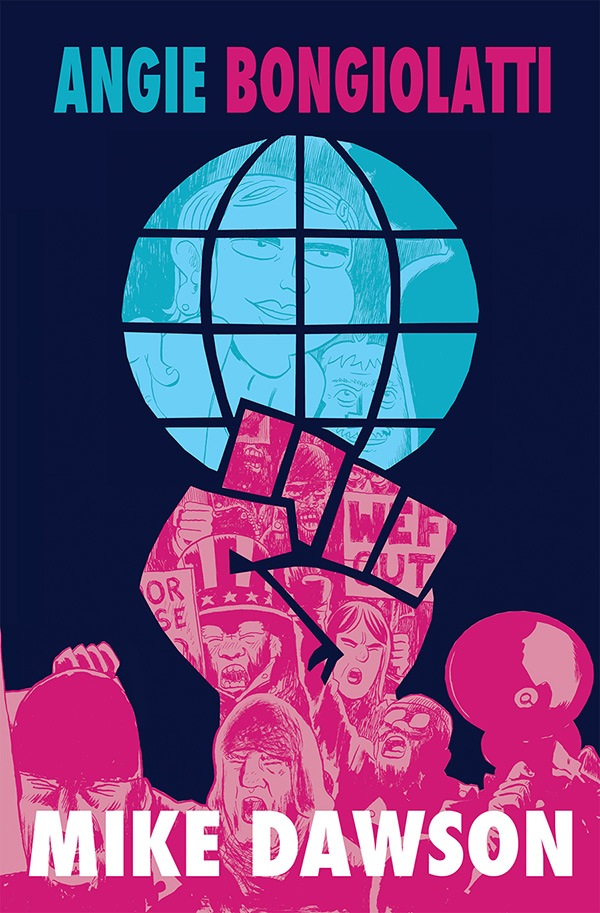
Mike Dawson is talented cartoonist, a witty raconteur and a fine podcaster— you can hear his work with Alex Robinson here at Ink Panthers. And as of yesterday he was a Tumblr king with a post calledAdvice to the mid-career cartoonist who has failed to build an audience. It’s honest and in some parts brutal.
My first “graphic novel”, my three hundred page debut memoir Freddie & Me, was published by BloomsburyUSA in 2008. The final sales tally (the book is now technically out of print) was 4,805 gross and 2,748 net. I think that means I sold 2,748 copies. Not great by Bloomsbury’s standards, but by my standards, that’s my bestseller.
My second book, Troop 142 was published in 2011 by Brooklyn based boutique publisher Secret Acres. I serialized the story online as I wrote. It was nominated for four Ignatz awards at the 2010 Small Press Expo, and won for Outstanding Online Comic. The book got nice attention from NPR and the American Library Association. It got another Ignatz nomination in 2012 for Outstanding Graphic Novel. To date, the book has sold 1,435 copies.
My third graphic novel, Angie Bongiolatti, was also published by Secret Acres. It debuted at the MoCCA Festival in NYC this past April. Last week I got my first quarterly sales report.
106 copies.
Holy fucking shit! One hundred and six copies??? How has this happened?
I’ll just send you to Dawson’s post for his conclusions from this, including his ambivalence about social media, his recent switch to shorter comics, and a frank confrontation with the “What am I doing here?” feeling that all of us have at some time.
Dawson’s graphic novel career hits a lot of spots that we have come to call typical of the indie cartoonist’s life. Freddie & Me was part of the early aughts rush to graphic novels by major publishers — a premature rush that resulted in mostly disappointing sales. Troop 142 was serialized on Live Journal and got quite a bit of attention during its run, resulting in the award nominations and notice; it could be considered an “establishing” work. Angie Bongiolatti is a more enigmatic work, from the fact that I have to look up how to spell the title every time, to a plot that defies summarization at all — it’s not an art show like many indie graphic novels, but rather a narrative about people who are confused about their own lives and look to someone who seems to be less confused via politics following 9/11. IT’s also an office drama, intermixed with the work of theorist Arthur Koestler. Like I said, there is no elevator pitch for it—it’s a heart felt, thought through work.
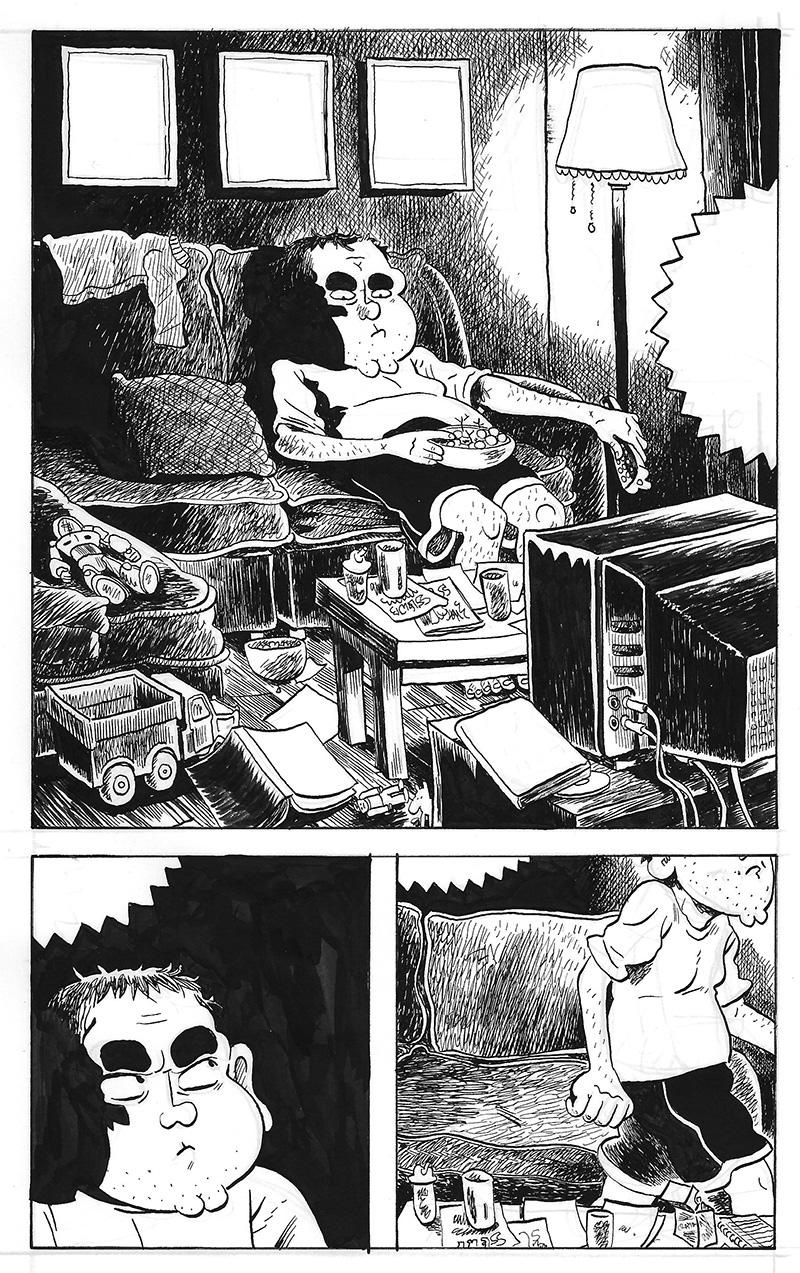
All three maintain a high level of cartooning and narrative skill. Although he’s never been a critics darling, Dawson’s carved a respectable place for himself. He should be just entering a strong period of confident work. Instead, he’s wondering why he’s even here.
Dawson says what a lot of cartoonists are thinking these days. You can slave away at the drawing board every night after the day job ends, but is there even a career here for most people? What am I doing? Where am I going? Will there be a cheese plate when I get there? It’s the greatest time ever for comics but it’s still a mode of self expression not a way to make a living for many folks.
The post got recognition of another kind: a take down by Abhay Khosla:
Uh, if I can add insult to injury: who did you even think your audience was? Your graphic novels had a $20 list price, and you hadn’t really made a name for yourself before trying to charge people $20 to find out if you were any good at making comics. Did you think there were a lot of people who take that kind of risk with their money, and if so, why? Is that how you buy comics— you just see books and then spend $20 on them, regardless of if you’ve never heard of who made them, week after week? What kind of comic-buying budget are you dealing with that allows you to do that?
I think some of Khosla’s point are a bit harsh—Daryl Ayo answers them here—but it’s true that finding an audience isn’t as easy as falling off a log or falling on a table at TCAF. I’m a fan of Dawson’s work, but not for reasons that readily translate to a steady audience.
In a private correspondence with Dawson, I suggested that Angie B. might have done better had it also been serialized online, the way Troop 142 was. It’s true that we have a ton of tools at our disposal to promote and disseminate all kinds of work now. It’s also true, as an agent told Dawson, that building an audience on social media is as necessary as knowing how to spell for authors these days. The rugged “self publisher” of the 80s and 90s has become the “self promoter” of the internet era. Dave Sim was right!
Dawson is a fine cartoonist with a distinctive style. His books aren’t for casual reading—he has a dense style that takes a while to read, just like a “real” novel. I haven’t seen the discussion of his essay beyond the two links above, but I suspect that a lot of cartoonists rolled it around in their heads as the day progressed.
Bonus reading: Tom Spurgeon interviews Dawson interviewed at The Comics Reporter
Whit Taylor interviews Dawson at Panel Patter Hillary Brown reviews Angie Bongiolatti at Paste Magazine
Blog: PW -The Beat (Login to Add to MyJacketFlap)
JacketFlap tags: Stephanie Buscema, seth kushner, Bernie Wrightson, Bob Camp, Asbury Park Comicon, Steve Mannion, News, Interviews, Robert Crumb, Arthur C. Clarke, Al Jaffee, Top News, Josh Bayer, Jack Davis, Jamal Igle, Jay Lynch, Michael Uslan, Mark Mazz, Mark Morales, Unbearable, Mad Magazine, Will Eisner, Asbury Lanes, Rick Griffin, Richard Corben, Rat Bastard, Rob Bruce, Sarah Dyer, Indie Comics, Joe Kubert, John Holmstrom, Isaac Asimov, Evan Dorkin, Events, Comics, Conventions, herb trimpe, George Barris, Heavy Metal Magazine, Box Brown, cliff galbraith, Danny Fingeroth, Chris Irving, Dave Ryan, Don McGregor, Ed Roth, Moebius, National Lampoon, Pierre Boulle, R.O. Bleckman, Mike Dawson, Asbury Convention Hall, Mike Zapcic, Ming Chen, Dean Haspiel, Add a tag
If you’ve been following the history of the Asbury Park Comicon, which opened only a year ago in March of 2012, you know it’s been a strange, yet rather astonishing ride, but imagine how much stranger it must be for founder and indie comics creator Cliff Galbraith. What started in a bowling alley turned music venue and local hangout, Asbury Lanes, has become a major testament to demand for Comic Cons in New Jersey, and also a statement about the desires and tastes of con-goers who have relished the indie vibe of Galbraith’s brainchild. After a highly successful second Con in September of 2012, Galbraith announced that the Con would move to the much larger and even more historic venue of Asbury Park Convention Hall for its third event on March 30th 2013.
Then Superstorm Sandy struck, devastating the seaside town of Asbury Park, leaving the future of the Con in question. Against some difficult odds, the Con forged ahead, and Galbraith faced another kind of storm- media frenzy- over the upcoming Con. It’s fair to say that his phone has been ringing off the hook as local press as well as The New York Times have been trying to get the scoop on what looks to be a growing New Jersey institution as Asbury Park Comicon nears its biggest event yet. Dozens of prominent guests will be flanking this full-blown gala of a Con, and the Con will also be featuring panels and contests. Galbraith hasn’t had a moment’s rest since all this started more than a year ago, and he finished up several other interviews just in time to answer some questions about all this Con madness, and how it fits into his own life, for The Beat.
Hannah Means-Shannon: Can you remember the moment when the idea for starting a Comic Con in New Jersey first occurred to you? How wild did the idea seem at the time?
Cliff Galbraith: Maybe I’ve always wanted to run my own con. I’ve been to enough of them over the last few decades. A lot of them were pretty shabby. Customer service was pretty awful. I’ve been to cons where the promoter never came around and so much as said hello or how’s it going. Some were downright rude or deceitful.
On a Sunday in the summer of 2011, I stopped into the bowling alley/rock club Asbury Lanes — they were having a little record fair in there. I knew a few of my friends would be there selling and buying records or drinking beers so I figured I’d get away from my drawing table for the afternoon and see what was happening. My friend and neighbor Robert Bruce was selling an assortment of rare rock and jazz records and some underground comix. I remember looking at someone rooting through a white box of records, and I turned to Rob and I said “Where else have I seen somebody doing that? Reminds me of people at a comic convention digging through long boxes.” We laughed, but I walked around a bit and I kept thinking about it. If they could sell records in this place, why not comics? My friend Jenn Hampton was the manager, so I asked her if we could have a comic con at the Lanes. Nine months later we had the first Asbury Park Comicon.
HM-S: What’s the strangest task you’ve ever had to do in order to get a Con running or keeping it on track?
CG: Partner with Rob Bruce! We’re friends, but business-wise we’re been very independent, lone wolves. But it’s been a great experience and there’s absolutely no way I could’ve done all of this or come up with all the solutions on my own. It’s been Cliff and Rob’s Excellent Adventure.
[Rob Bruce and Cliff Galbraith]
HM-S: Why Asbury as a location for the Con?
CG: People launch cons in New Jersey all the time. Some have been going on for years, but they don’t grow. I think the secret ingredient in throwing a Con is location — pick a fun destination. That’s really what set San Diego up for success early on. Who didn’t want to go somewhere with beautiful weather with plenty of bars, restaurants, hotels, a beach? That’s enticing.
So there needs to be something other than the Con once you walk outside. That’s my standard. I don’t want to go to some Con near an airport or far away from everything. I don’t want to go to some little hotel hermetically sealed in away from the world. Lots of Cons are downright depressing. They have no personality. Just putting a bunch of artists and dealers in a room and charging admission doesn’t make it fun.
[The Asbury Park Boardwalk at dusk]
HM-S: What were reactions like to the first Con at Asbury Lanes?
CG: Everyone had a great time. Most people sold lots of books. I was stunned. I just wanted to put on a little event and not screw up, just have a fun day. But the venue was a real hit. The exhibitors who’d never been to Asbury Park, who’d never been to Asbury Lanes fell in love with it. I’m spoiled, the Lanes are part of my world, but it’s really a cool old place. And there’s a bar. We played old punk tunes and Serge Gainsbourg, Nelson Riddle, soul, and stoner rock. It was more like a party — with comics.
HM-S: What obstacles did you face launching that first Con at the Lanes?
CG: It’s always tough at first to get someone with a name to attract fans. I think the first guy I called was Evan Dorkin. I always dug his work, and I’d known him for years — but more importantly he was someone who would get what I was trying to do. Evan and Sarah Dyer jumped right in. Then they told Steph Buscema. Jamal Igle was another old friend, so I contacted him early on. Those guys trusted me — that was important. But getting talent can be tough early on. Then there’s talent that doesn’t show up, there are flakes in this business and it just goes with the territory.
The biggest shock was that two months before our first Con, Asbury Lanes was sold. I know it sounds crazy, but I never got a written contract. I made a deal with my friend who was the manager. At one point, she didn’t know if she was going to still have a job or whether the new owners would honor our deal or want more money. It was scary, because this was our first time and if we screwed this up nobody would ever trust us again. It all worked out and it was a great day.
[APCC at the Asbury Lanes]
HM-S: What’s your personal philosophy behind Comic Cons?
CG: Don’t be boring. Don’t be predictable. Don’t call yourself a Comic Con and fill the bill with wrestlers, actors, and other people who have nothing to do with comics. Respect and honors those who make comics, especially those who came before us. I see a lot of bullshit at cons and I just don’t get it. If somebody wants an autograph of somebody from Twilight or some guy who played a storm trooper 30 years ago — that’s their business, but it really has nothing to do with comics. It detracts and devalues comics as something that is supposed to be celebrated. My feeling is if you’re not here for the comics then shove off. Go to a horror con, go to a sci-fi con.
HM-S: Why do you think we need Comic Cons, as a society?
CG: When my parents were kids the big thing was the circus coming to town. That’s disappeared, and now we have the Comic Con coming to town. Look at every city — there’s a con everywhere. People love it — its like Woodstock, Lollapalooza, county fair, chili cook-offs, boat shows, car shows, record fairs, film festivals, people want to get together with those who share their passion. They want to spend a day with their kids, meet new friends, make a discovery. It’s an amazing social phenomenon, and it’s in its infancy.
HM-S: What did you grow up reading? Any favorite comics or characters?
CG: My mom grew up in a candy store in Newark, N.J., and she spent her time drawing pictures of movie stars from magazines that were on the newsstand. She also loved comics. She introduced me to Superman when I was about four years old. She also taught me to draw. She got me a subscription to SUPERBOY and I looked forward to those comics every month. Then one day when I was getting a haircut, I picked up a copy of FANTASTIC FOUR that was in the barber shop — this was around 1965. The Kirby art kind of creeped me out at first, but I was fascinated. Joe Kubert’s HAWKMAN was a favorite. Of course BATMAN. CREEPY, EERIE, FAMOUS MONSTERS and hot rod magazines with stuff by Ed Roth and George Barris. I also read a lot of science fiction — it was a pretty classic age with Asimov, Arthur C. Clarke, and I read Pierre Boulle’s Planet of the Apes after seeing the movie. I graduated from super heroes to MAD. Then National Lampoon. At some point I found some underground comix in a head shop in Menlo Park, N.J. — they blew my teenage mind. Then Heavy Metal Magazine and Punk Magazine completed the process of completely warping my mind.
HM-S: What are your biggest influences as a comics creator?
CG: More of MAD than I used to acknowledge. I think it was an early influence in the way I saw a lot of stupid things in society. It was much tougher on politicians and corporations back in the 60′s and 70′s. I would try to draw like Mort Drucker when I was a kid. Kirby is an influence when I’m feeling lazy, when I think I’ve done enough — I think about the amount of work he put out in a day and I’m embarrassed. He keeps me going back to do a bit more before turning out the lights. I love Moebius. Bernie Wrightson, Richard Corben, Crumb, Rick Griffin, Jack Davis. I go back to Will Eisner when I get stuck on a drawing that’s not working — I’m still learning from looking at his drawings, I get answers from his panels. But when I created Partyasaurus, Beachasaurus, and all the Saurus characters back in the 80′s, I did some sort of R.O. Bleckman thing with the wiggly, broken lines. It was very successful, but I never revisited that style again.
HM-S: It’s been a winding road for you career-wise. How does Con creating fit into your life, looking back?
CG: I came back to comics after ten years — at one point I was in really bad shape with Lyme disease, but that’s a whole other story. I started making RAT BASTARD comics again, just selling them at cons. I didn’t even go through Diamond — I just wanted to put something out and do some cons. Then I started working with my wife on UNBEARABLE, a totally different style but a lot of fun to draw. I was finally getting back into it, making comics. I had a few issues written I was drawing consistently and then this damn Asbury Park Comicon came along. The first one wasn’t too bad, but now with a much bigger venue, more guests, more exhibitors, ads, making a TV commercial, doing interviews with newspapers, and building a website, designing posters, it became a full time job. I didn’t realize it at first, but I sacrificed my art to build the Con. Which is okay, since April 1st I’m back at the drawing board and making comics again.
HM-S: Asbury Park was pretty hard hit by Superstorm Sandy. What was your own experience of the storm like?
CG: The other day I found pictures of my wife Judie and I at Convention Hall on the balcony making silly faces trying to stand up against the wind the day before the storm. I felt embarrassed that we were joking about it and twenty-four hours later there would be so much devastation. We could’ve have known, but I couldn’t look at those pictures. The fact that Convention Hall is still standing is amazing, but it did sustain a lot of damage.
My own experience with the storm was terror. There’s three giant pine trees in my yard that I was certain would crush us in the night. I felt like the roof on our house would be torn off any minute the whole time. We had no power for two weeks. We tried to stay in our home and tough it out with no power. I could draw during daylight. We had little parties with the neighbors and pooled our resources. After 7 or 8 days, it got too tough. It was cold. There wasn’t much to do once the sun went down. We had to go stay with my parents. But after a few days, I felt like I should be putting Led Zeppelin posters up in the basement — in other words, I felt like I was a teenager again. My parents were great about it, but you really can’t go back and live with your parents.
We were fortunate — we got to go back to our house and it was like nothing had happened other than we had to restock our refrigerator. But only two miles east of us looked like an A-bomb had been dropped. A lot of our friends suffered from that storm. We’ll be doing several things at Asbury Park Comicon to raise money for some of the nonprofits in our area and keep the focus on Sandy victims.
[The Asbury Convention Hall, site of APCC 2013]
HM-S: Were you afraid that damage from Superstorm Sandy might put the kaibosh on Asbury Park Comicon this year?
CG: It actually did. The building was going to be closed down by the city or something. We were told we needed to start thinking about an alternate site. It got pretty bleak. We looked into moving the con to Monmouth Racetrack, or one of the schools in Red Bank. We were desperate. And then I got a call late one night and they told me we were back in Convention Hall.
HM-S: What’s going on with Asbury Convention Hall? I hear it may not host events in the future after May.
CG: It’s an old building. It’s taken a beating. It had issues before the storm. So now it’s just better to shut down completely and get everything done once and for all. May 1st, it will be shuttered. We may be one of the last events there. This is a big thing for us to throw a con there — we grew up walking through the Grand Arcade from the boardwalk. I saw The Clash there, boxing, roller derby. To see our event on that marquee is like a dream come true — and it almost didn’t happen.
[Asbury Park Press covers COMIC BOOK MEN and Galbraith's upcoming Con]
HM-S: What’s up for Asbury Con in the future? Is it going to become an even bigger Jersey Con?
CG: We’ll know in a few weeks what the renovation schedule is for Convention Hall. We’d like to announce the dates for 2014 at this the con next week, but I don’t know if that’s quite possible by March 30th. But we’d like to move to late April and do a two day Con. The Berkley Hotel has a series of ballrooms — it’s like The Shining in there. I spoke to them last week. I’d like to keep this show in Asbury Park. Again, it’s the location that really makes a Con special. We’re planning on including more venues, galleries, etc. in the Con. Maybe a cosplay parade on the boardwalk. Put some of the bigger panels in the Paramount Theater.
We also have another big Con in the works for June 2014, but we haven’t finalized the date or exact venue. We’ve floated the ideas with a few comic industry people and we’ve gotten good feedback. The location will surprise a lot of people at first, but it makes sense geographically.
[Poster art for APCC#2 in 2012]
HM-S: What changes had to be made in the planning process of the con to move it from Asbury Lanes to the Convention Hall this time?
CG: Besides the amount of time Rob and I had to put into it, I’d say the next thing would be the amount of money it takes to launch an event this size. People have no idea what goes into a show like this. Now we’re into things like insurance, security, lighting, sound systems, putting guests in hotels, meals, travel, advertising — the expenses pile up quickly. This is no longer a fun little get-together at the Asbury Lanes with some comics and a few beers, this is a serious business venture.
[Memorable image from APCC #2 in 2012 with Evan Dorkin, Cliff Galbraith, Dean Haspiel, and Larry Hama]
The most important thing I’ve learned about running a show this size is we can’t do it on our own. We had a lot of help. Guys like Danny Fingeroth, Dean Haspiel, Seth Kushner, Chris Irving, Mark Mazz, Dave Ryan, all got us guests that we never would’ve gotten on our own. Eric Grissom built us a great website. Stu Wexler made a TV commercial — and nobody asked for anything in return. Mike [Zapcic] and Ming [Chen] from Comic Book Men have been promoting us for months on their podcast. The people who run Convention Hall have been amazing. They all just want us to succeed — we’ve got some great friends in our corner. We’ve also got some great guests: Al Jaffee, Herb Trimpe, John Holmstrom, Bob Camp, Don McGregor, Jamal Igle, Jay Lynch, Evan Dorkin, Sarah Dyer, Mark Morales, Stephanie Buscema, and Batman producer Michael Uslan. Then there’s a whole indie crew like Box Brown, Josh Bayer, Mike Dawson, Steve Mannion, and lots of others.
I’m really fortunate to be able to do this. To have gotten my health back, to be making comics again and to put on events with so many remarkable people. Sure it’s a lot of work, but I’m having the time of my life!
HM-S: Cliff, I don’t know how you found the time to give us such a detailed insight into your own personal journey envisoning the Asbury Park Comicon with only a few days to go until the biggest APCC yet. But we appreciate your willingness to talk about it so openly and thanks for bringing a Con of this caliber to New Jersey.
Hannah Means-Shannon writes and blogs about comics for TRIP CITY and Sequart.org and is currently working on books about Neil Gaiman and Alan Moore for Sequart. She is @hannahmenzies on Twitter and hannahmenziesblog on WordPress.




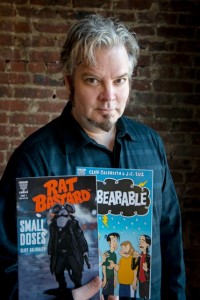
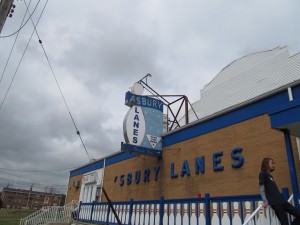
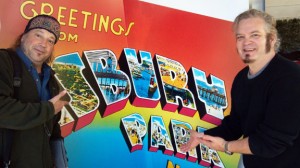
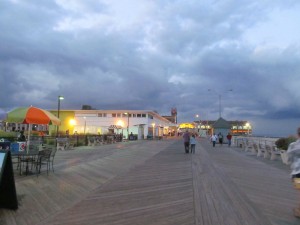

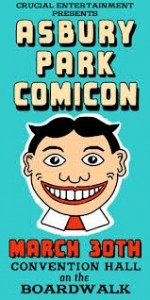
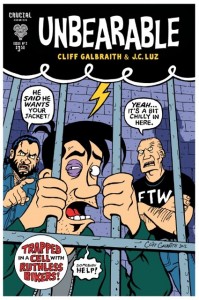
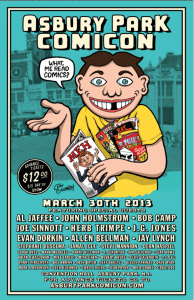
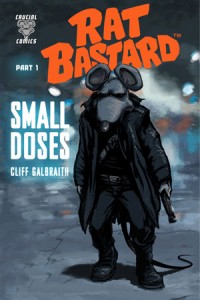

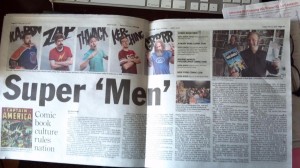
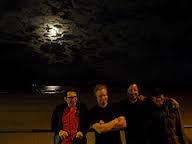
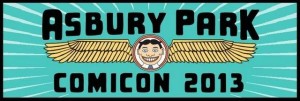
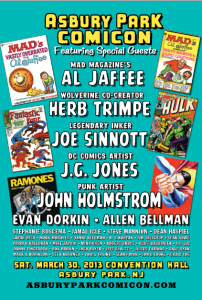
100% agreed on the comics magazine article, Heidi. A print mag (or any print endeavour) is going to live and die on its contents and ability to connect with the specific audience it is attempting to reach. You can’t try and be all things to all people – it’d be like an anthology series of single issues having wildly different tones within the pages. Most readers don’t seem to appreciate that, at least in the serialized anthology format, as it seems you’re only enjoying a fraction of the comic for the full price. Makes the decision to drop really easy.
Well, retailers didn’t even give ACE a chance, frankly. We had Diamond send along a gratis copy of #1 to every account in North America (some 3,500, I believe) and our order numbers subsequently rose by 15 copies. As editor, I wasn’t trying to be “all things to all people,” but I can’t disagree with Johanna and Heidi on the notion that ACE tried to be inclusive with readers and collectors alike. The raison d’être (and the reason I was paid for helming this laudable effort) was the belief that the marketplace could use a monthly price guide — a WIZARD with content, if you will… It was the best job I ever had, and there’s a slim chance it might be picked up on a less frequent schedule by another publisher, but who knows. Print is tough but the thought was, if it was comic-book size, appeared on the stands the same week every month, and contained fun content well presented, maybe readers devoted to print might give it a whirl. Frankly, I never heard one negative comment about the mag and the devoted readership — small, yes, but they seemed to love it — appears to lament its passage.
Important point: Rob Yeremian of The Time Capsule, Cranston, RI, was the publisher of ACE, a terrific retailer and friend. I was the mere editor/designer.
Thanks, Heidi.
“I know Bleeding Cool magazine is still going on, but I have never read a copy and only sighted it infrequently”.
Heidi, may I suggest you order it from your local comic retailer? I’m sure they would be happy to take your order. Interestingly, you’ve written about its contents before, I just presumed you’d read it before doing so.
The magazine’s editor-in-chief is Hannah Means-Shannon, who used to be a leading writer on The Beat, I seem to recall. She’s rather good, you might recall.
Anyway, Bleeding Cool Magazine still exists, it still sells, indeed, it has expanded its size recently, by over a quarter. I’m writing for its 19th issue right now, add a zero issue and two FCBD editions (do you not get press copies of all the FCBD books? You should.) and that’s the 22nd edition. Might be worth tracking down, even for anthropological reasons.
Don’t wait till May.
It is a shame about ACE. It’s always sad when a print magazine ends. We found that we3 couldn’t make print work which is why we switched to the web…
First time I’ve ever heard of ACE, even though I buy lots of comic mags (both US and french), love Mr. Cooke’s other magazines Comic Book Artist and Creator and check Previews every month.
If I hadn’t heard of it, the average reader had even less chances to do so, sadly.
Of course, the presence of a price guide would probably make me NOT to buy it, sorry to say.